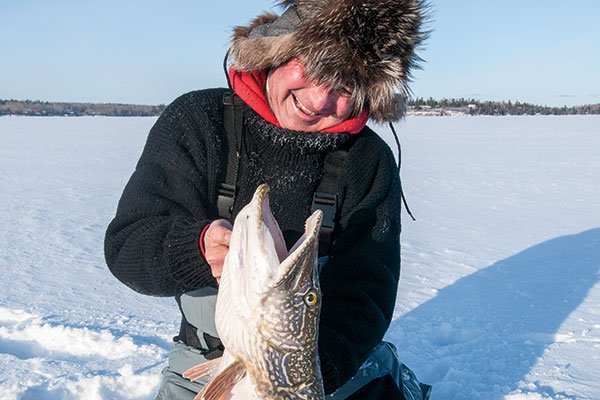
A Fly Fishing Trip to the Greatest Northern Pike River in North America
It had been a long, exhausting journey from my home in New York to way-way-way-northern Manitoba—four flights in two days, the last of which was a short stint in a floatplane that dropped us off at our fish camp on the Cree River—but the boat ride to the pike grounds was restorative. I was ready to fish.

Multispecies Systems That Catch Fall Pike
Even when I drive to a pike heaven like Rainy Lake, a Canadian Shield lake on the Minnesota-Northwest Ontario border, I usually begin with tactics that allow me to test the waters for the happening fish of the moment. Could be pike, but could also be walleyes, and at times smallmouth bass. Then I tinker from there, switching tactics to more accurately target whichever species is hot and happening.

Catching Late Summer Pike on Live Bait
When it comes to a natural presentation for pike, nothing rivals livebait rigging. Even under adverse water or weather conditions, lockjawed pike can be coaxed into eating a well-placed sucker or chub. These baits react instinctively to the presence of nearby predators. They swim harder and dart about in search of an escape route. This behavior gets the attention of pike and triggers strikes in a manner that lures can’t duplicate.

Seven Lessons for Bigger Winter Pike
I was so smitten with pike that I pursued the big toothy critters with abandon throughout the winter months. That drive laid a foundation in my understanding of pike and taught me lessons that I’ve been able to refine to this day.
It helped, too, that I was able to bounce my on-the-ice observations off some of the greatest minds in the science community. Four decades later, we’re landing more and bigger pike than ever before.

Fishing the Edges for Fall Pike
Fishing northern pike are cunning predators adept at feeding in packs, while also solitary assassins. In addition to their keen senses of sight, smell, feel (vibration), and hearing, they possess stealth, speed, and agility.
